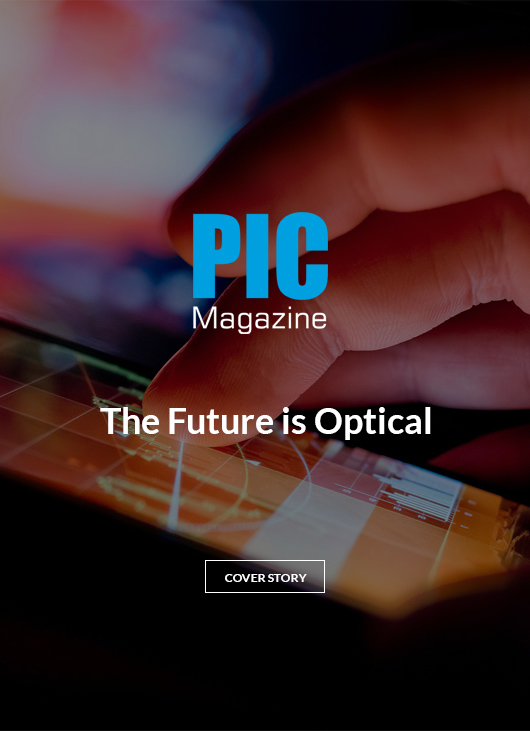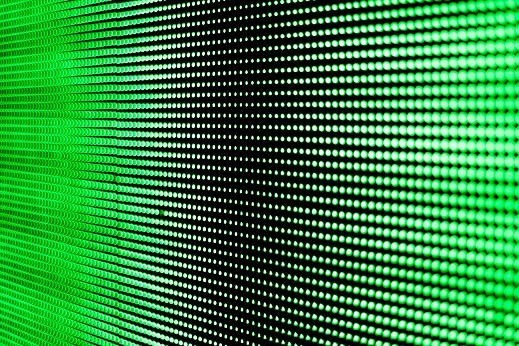
This article was originally featured in the edition:
PIC Magazine Issue 8 - March 2018
Seren targets microLED display markets

GaN template manufacturer, Seren Photonics, to scale-up processes for the Apple and Sony displays of tomorrow, reports Rebecca Pool.
Earlier this year, UK-based manufacturer of GaN templates, Seren Photonics, revealed it had secured £500k to scale-up MOCVD growth processes and drive green LED epitaxy on semipolar GaN development forward.
The cash forms the first tranche of a £1 million funding round and follows several years of two- and four-inch semi-polar and non-polar template development targeting wavelength-stable, efficient green LEDs with high light output and reduced droop.
But importantly, it comes at a time when Apple, Sony and many more along the supply chain, are eyeballing technologies that can deliver the spectacularly high resolution, high brightness, low power micro-LED screens that the display industry craves.
As Seren Photonics Chief Development Officer, Bedwyr Humphreys, puts it: "Our technology makes longer wavelength (green, yellow and orange) InGaN/GaN based LEDs more wavelength-stable over a wide range of operating conditions and delivers the potential for improved efficiency through superior electron-hole recombination rates."
Seren has already demonstrated that the template process can run in a pilot-scale environment and is now honing yields and process control.
"Our aim is to set up our own manufacturing facility at the emerging Compound Semiconductor Cluster in South Wales in around 18 months, whilst continuing to work with our existing partners," adds Humphreys. "By this time, we want to be able to say: 'Yes, we have the confidence that the product is doing what we expect it to and, yes, we have significant commercial traction to create a facility and make it a success'."
Road to green success
Seren Photonics first emerged in 2009 to fabricate high efficiency InGaN/GaN nano-rod LEDs, pioneered at the University of Sheffield, UK. But within a few years, the company had switched focus and was using its growth-on-nanorod and AlN buffer layer approach to produce low defect density GaN templates for low-droop blue LEDs and high efficiency green LEDs.
Recent collaboration with Australia-based BluGlass sees Seren working to transfer its semi-polar GaN template process onto the semiconductor manufacturing developer's MOCVD platform. Later this year, Seren plans to demonstrate the process on four-inch wafers.
"Our research and development customers are happy to be playing on two inch wafers but LED customers and tech giants need a minimum of four inch wafers," says Humphreys. "Six inch wafers aren't a problem either and we will move onto these when they are required."
According to Humphreys, tier one companies are interested in semi-polar templates to fabricate blue LED devices with reduced droop. Meanwhile, Asia-based tier two companies are drawn to samples of green LED epiwafers.
"Tier one companies tend to have a long-term mindset and are happy to take the template and develop the rest themselves," points out Humphreys. "But tier twos, particularly those in Asia, simply want a device wafer that they can run through their fab, optimize the process and commercialise the LED."
Given this, Seren is developing green structures on its semi-polar templates. "Overnight we saw immediate interest for 'plug and play' sample structures, when we started talking about green epi wafers," says Humphreys. "So now we have evolved one step down the supply chain from templates to device epi-structures, although its unlikely that we'll go any further than that."
But while demand for semi-polar templates and epi-structures is clearly growing, what about Seren's non-polar technology? Indeed, from word go, the company has been working on non-polar GaN on r-plane sapphire as well as semi-polar GaN on m-plane sapphire.
Humphreys reckons customers from the LED industry have historically favoured the semi-polar template as epitaxy structures can be more easily grown on this material. But change is afoot.
"We're now getting more enquiries for non-polar a-plane GaN for HEMT applications, such as sensors and electronics," he says. "Non-polar GaN development is on our roadmap but we are focusing on semi-polar templates for optoelectronics right now."
And without a doubt, optoelectronics opportunities are set to soar. France-based industry analyst, Yole Développement, forecasts more than 300 million microLED displays will be shipped by 2025, dwarfing today's relatively negligible sales. Meanwhile, Research and Markets, Republic of Ireland, puts annual growth at 53.2%, with the global market reaching $19.89 billion by 2025.
Seren Photonics is hardly alone in its wish to grab market share. UK-based Plessey, for one, has revealed its intention to deliver the industry's first monolithic microLED displays by 2018, while the likes of Aledia, France, and Glo, Sweden, are delivering 3D nanowires for microLED displays. Indeed, Aledia recently won €30 million to drive commercialisation of its 3D nanowire-on-silicon technology forward.
Humphreys describes these monolithic approaches as 'elegant' but asserts fabricating micron- to nano-sized red, green and blue LEDs on one chip isn't easy and better suits smaller screen sizes, such as wearable displays. In contrast, he believes larger displays, including tablets, will benefit from having individual red, green and blue LEDs in the relatively big pixel spaces, making Seren's technologies for efficient and wavelength-stable green LEDs a real draw.
"Today's green LEDs have a wall-plug efficiency of less than 20%, so in some applications you have to have two green LEDs for every red and blue, raising power consumption," he says. "Also, c-plane green LEDs have significant wavelength shift at different current densities, something that can cause problems in display applications."
Given this, Humphreys is confident Seren's approach provides the answer. "The ability to have LEDs that are wavelength-stable across a range of current densities and operating powers is so very important for these display applications," he says, "So our focus is about getting green LED wafers out there right now; we're quickly putting the pieces together and are targeting initial products within six months."


































